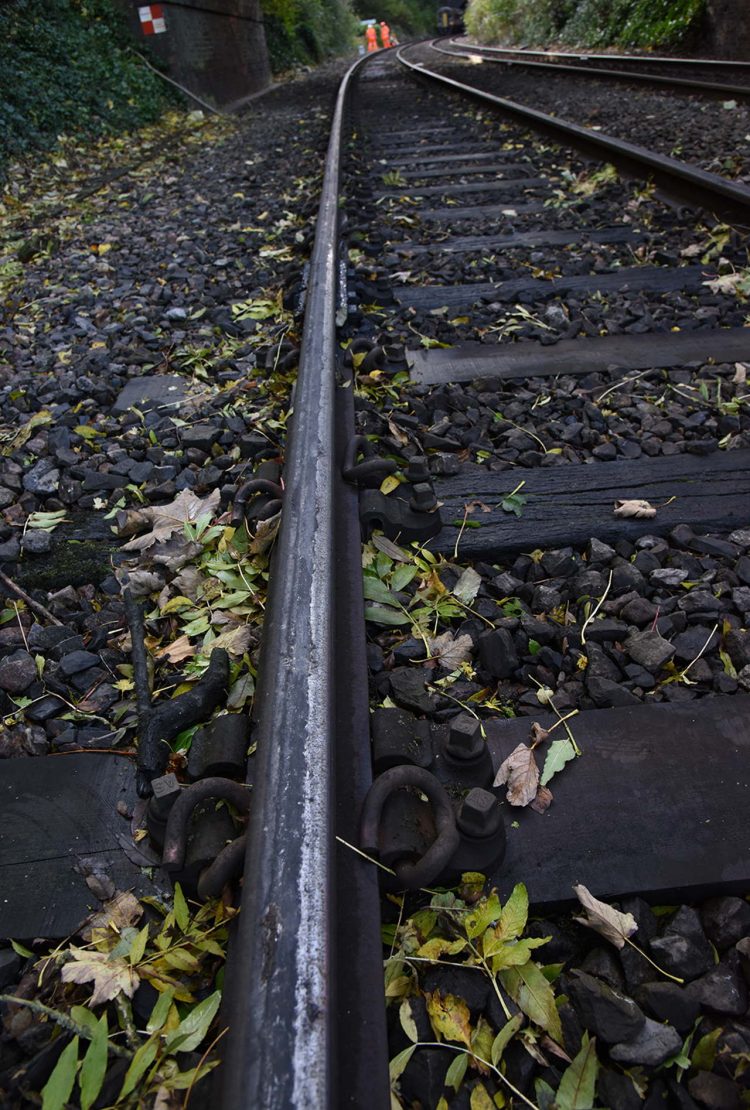The Rail Accident Investigation Branch has released its interim report into the Salisbury crash, which took place on the 31st October 2021.
At around 18:45, on the 31st October 2021, 1L53, the 17:20 South Western Railway service from London Waterloo to Honiton collided with the side of 1F30, the 17:08 Great Western Railway service from Portsmouth Harbour to Bristol Temple Meads.
The collision took place at Salisbury Tunnel Junction, on approach to Fisherton Tunnel.
In total, 200 passengers were on the two trains, each train with a driver and guard on board.
We already know that from the preliminary examination, it was found that 1F30’s movement across Tunnel Junction was protected by a red signal (SY31). 1L53 passed this signal at danger by around 220 metres.
Analysis of the On Train Data Recorder (OTDR) found that the driver initally applied service braking to slow the train on approach to the caution signal before signal SY31.
After 12 seconds of service braking, the driver made an emergency brake demand as the train was slipping on the rails. As the train approached signal SY31, with the emergency brake still being demanded from the driver, a second emergency brake demand was made by the Train Protection and Warning System (TPWS). Both of these demands did not prevent the train from reaching the junction.
OTDR analysis by the RAIB has shown that wheel slide was present both when service braking was applied and after the emergency brake was demanded.
Thirteen passengers and the driver required hospital treatment as a result of the collision, which has also caused significant damage to the infrastructure and trains.
The Interim Report states that on the day of the accident, the Rail Head Treatment Train had not run and had been rescheduled. The rescheduling meant that the RHTT should have passed through the junction at 11pm – meaning that there was an interval of 36 hours between RHTT trains. The Wessex Route Autumn Working Arrangements state that “Wessex aspire for all routes to be covered once in 24 hours throughout the Autumn period.’ On weekdays (Monday to Friday) two RHTT were scheduled to operate over each section of line each day. The working arrangements document stated that this was ‘to maximise the chance of each site being treated at least once [every 24 hours]. One set of circuits run at weekends.’

However, the report says that investigation work found that the RHTT train set to run on the day of the accident was rescheduled to pass through Tunnel Junction around 11pm, meaning there was a 36 hour gap between passing RHTT trains.
You can read the interim report here, and a full report will be released in due course






Responses
Probably the worst rail accident that Salisbury has witnessed.
Fault lays squarely with the driver if any warnings were missed but we’re functioning. The rail treatment although missed, still might not has avoided the collision.
Having quickly scanned the report, it quite clearly states that the drivers responses were correct to the signalling and speed limit requirements. Although, it could be argued “inappropriate speed” could be considered a factor i.e. although within the speed limit, due diligence to the weather conditions would have suggested a more cautious approach. At this moment in time it is a bit rash to throw the driver under a Stagecoach……….